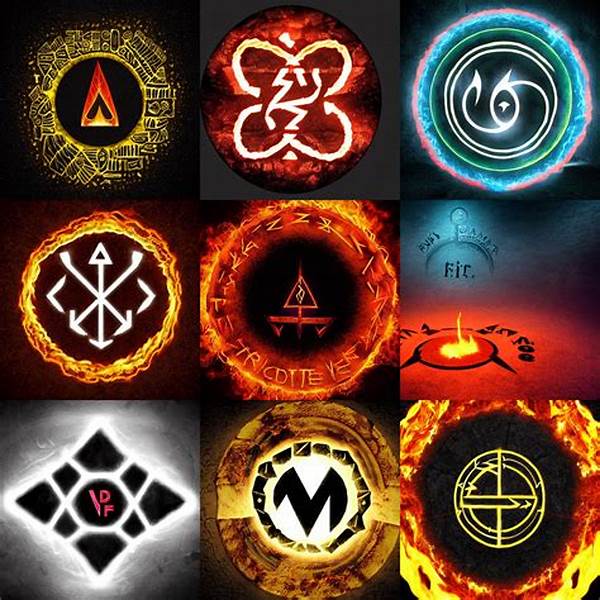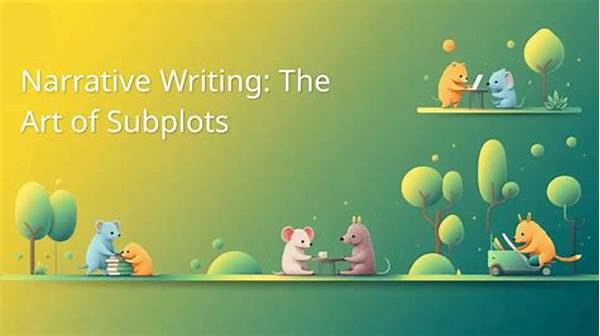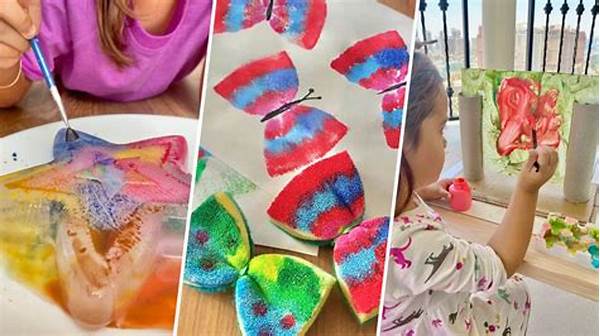Fantasy artwork often captivates the imagination, drawing viewers into worlds where magic and mystery reign. Among the myriad elements that artists use to breathe life into these fantastical worlds, light plays an exceptionally vital role. Understanding the symbolism of light in fantasy art allows both the creator and the audience to delve deeper into the underlying narratives and emotional textures presented in the artwork.
Read Now : Innovative Solutions For Art Print Scalability
The Importance of Light Symbolism
In fantasy artwork, light is not merely about illuminating scenes; it carries a profound symbolic weight that conveys themes and emotions. The interplay of light and shadow often accentuates contrasts between good and evil, highlighting the eternal struggle prevalent in many fantasy narratives. Light symbolism can denote purity, hope, and divine intervention, offering a beacon of guidance in otherwise chaotic worlds. For artists, manipulating light can elevate the storytelling power of their work, capturing nuances that transgress the canvas.
In analyzing light symbolism in fantasy artwork, one must consider not just the source of light, but its quality and direction. A gentle, diffused glow may suggest warmth and safety, while sharp, contrasting beams can invoke suspense or danger. These nuanced manipulations invite viewers to engage with the piece on a deeper level, inviting interpretations that vary based on the individual’s personal experiences and beliefs.
By employing light symbolism, fantasy artists also create an emotional dialogue between the artwork and the audience. Whether through a luminescent sword that symbolizes the hero’s destiny or a dimly lit forest representing hidden dangers, light becomes a language of its own—silently communicating yet profoundly impactful. Observers are thus engaged in a visual conversation, encouraged to explore the multidimensional narrative woven through the artistry of light.
Examples of Light Symbolism
1. Guiding Light: Light is frequently used in fantasy artwork to symbolize guidance, leading characters out of darkness and towards salvation or clarity.
2. Duality of Light and Darkness: Artists often contrast light with dark elements to explore the tension between opposing forces, embodying the perennial struggle between good and evil.
3. Illusion and Reality: In some fantasy scenes, light creates optical illusions, blurring the line between reality and imagination.
4. Emotional Illumination: Light can also illuminate the emotional state of characters, revealing internal struggles or epiphanies.
5. Transition and Change: Beams of light may signify transformation, marking key moments of change or metamorphosis within a story.
Symbolic Layers in Fantasy Art
The layers of light symbolism in fantasy artwork are numerous and intricate, often reflecting the complex narratives that define the genre. Artists deliberately use light to augment the storytelling aspect of their work, ensuring that every shadow and highlight contributes to the underlying theme. This attention to detail allows each piece to hold multiple meanings, inviting viewers into realms where nothing is as it seems.
Fantasy artists utilize techniques like chiaroscuro, the bold contrast between light and dark, to emphasize thematic crescendo or moments of revelation in the artwork. The quality of light can evoke moods, suggest movement, or indicate the passage of time, providing a visual cue to the underlying temporal aspects of the narrative. Through light, artists convey serenity in scenes of tranquility or foreboding in those of danger.
Moreover, the spectrum of colors that light embodies further enriches its symbolism. A soft, golden hue might evoke a feeling of nostalgia or peace, while cool blues can impart calmness or melancholy. This use of color informs the viewer’s emotional response, rendering the narrative more immersive and relatable. Light symbolism thus elevates fantasy artwork beyond mere visuals into a resonant storytelling medium.
Symbolism Across Different Artistic Styles
1. Realism vs. Surrealism: In realistic fantasy art, light could be used to enhance authenticity, while in surrealism, it often defies logic, emphasizing dreamlike qualities.
2. Historical Influence: Many artists draw on historical art traditions, where light symbolizes divine presence or enlightenment, weaving these influences into modern fantasy art.
3. Cultural Significance: Light in artwork can reflect cultural myths and legends, where certain deities or spirits are represented through illuminating forms.
4. Technological Fantasy: In works set in futuristic worlds, light might represent advanced technologies or alien luminance.
5. Nature-Driven Narratives: Light falling through treetops or glimmering in water can symbolize nature’s omnipotence and its influence within the fantasy world.
Read Now : Engaging Content For Artists
6. Abstract Interpretations: Abstract fantasy art may use light to convey emotional states or abstract concepts, rather than literal interpretations.
7. Interplay with Magic: Light often suggests magical influences, illustrating spells or enchantments.
8. Depicting Sacrifice: Light may symbolize sacrifice, with characters bathed in a radiant glow at pivotal moments.
9. Symbol of Mortality: Artists might use light to represent the fleeting nature of life or impending doom.
10. Hope Amid Despair: Even in the darkest scenarios, a shard of light can symbolize hope and the promise of redemption.
Artistic Techniques and Interpretations
The artistic techniques employed in creating light symbolism in fantasy artwork are as varied as the interpretations they inspire. Techniques such as high contrast, selective focus, and backlighting help to draw the viewer’s attention to particular narrative elements. High contrast, for instance, can delineate good from evil, emphasizing a narrative’s moral undertones. Selective focus allows specific details to emerge from the shadows, guiding interpretation and underscoring themes central to the story.
Backlighting creates a halo effect, often used to imbue characters with an angelic or heroic presence. This technique manipulates the viewers’ perception, aligning their emotional responses with the artist’s narrative intent. Such manipulations invite a deeper engagement with the artwork, compelling observers to consider what exists beyond the immediate visual.
Ultimately, these techniques facilitate an exploration of narrative themes and character dynamics, allowing each viewer to interact with the artwork in a personally meaningful way. Light becomes a tool of narrative depth, transforming each piece into a multifaceted exploration of myth and meaning.
Emotional Resonance Through Light
The emotional resonance achieved through light symbolism in fantasy artwork cannot be overstated. It serves as a visual language that goes beyond aesthetics to touch upon the subconscious mind. The interplay of light and shadow evokes a spectrum of emotions, from hope and enlightenment to fear and uncertainty. For artists, mastering this emotional dialogue through light is crucial to mesmerizing audiences and anchoring the fantastical elements of their work in relatable human experiences.
By employing varied light intensities and color palettes, artists can subtly guide an audience’s emotional journey. A sudden burst of light might symbolize catharsis, while an encroaching shadow can stimulate a sense of imminent threat. In doing so, the artwork creates an immersive experience that resonates with viewers on a visceral level.
Furthermore, light symbolism in fantasy art reflects broader metaphysical questions about existence, morality, and the universe’s mysteries. As viewers engage with this symbology, they are invited to reflect on their own beliefs and emotions, making each encounter with the artwork a unique and personal experience. Through this deeply ingrained symbolism, light becomes both a storyteller and a mirror of the human condition.
A Concluding Reflection on Light Symbolism
In conclusion, the study of light symbolism in fantasy artwork reveals the nuanced complexities that artists harness to convey deeper meanings within their creations. Light is more than a mere visual element; it is a dynamic symbol that enriches narratives, guides emotional responses, and bridges the gap between imagination and reality. The strategic use of light allows artists to transcend conventional storytelling, crafting visuals that resonate powerfully on both intellectual and emotional levels.
Engaging with light symbolism in fantasy artwork invites viewers into a participatory role where interpretation becomes a shared journey of discovery. Each piece of art becomes a canvas where stories unfold in myriad dimensions, urging the observer to delve beneath the surface and explore the unspoken yet eloquent dialogue initiated by light.
Ultimately, in the realm of fantasy, where the boundaries of reality are fluid and ever-expanding, light serves as the universal language that guides, defines, and inspires. By understanding and appreciating this symbolism, we open ourselves to the transformative power of art, allowing us to traverse the vast landscapes of imagination that fantasy art so vividly portrays.



